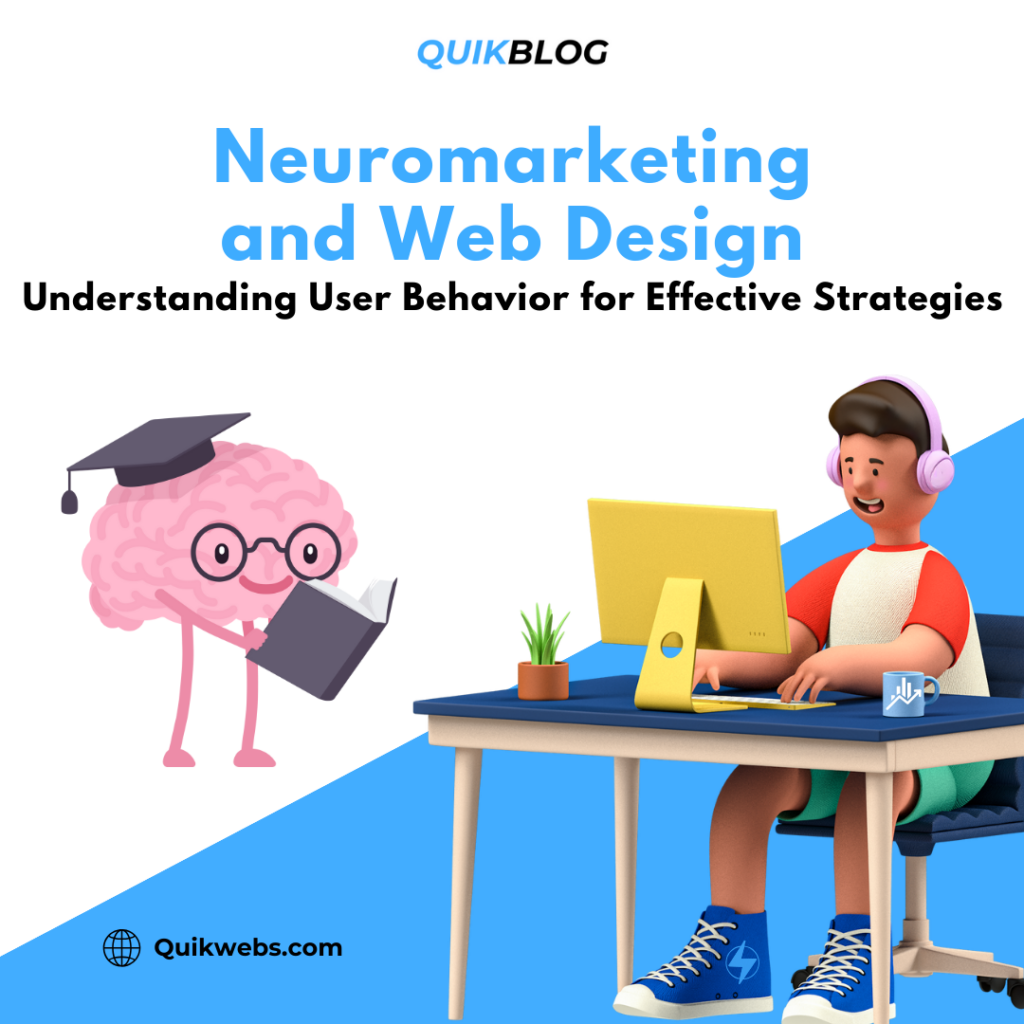
In the dynamic realm of web design, where user engagement is paramount, understanding the intricacies of human behavior is key to creating effective and impactful strategies. Neuromarketing, a field that delves into the subconscious drivers of consumer decisions, plays a pivotal role in shaping web design approaches. In this exploration, we’ll unravel the connection between neuromarketing and web design, accompanied by real-world use cases that demonstrate the power of leveraging cognitive insights for a more compelling online experience.
The Neuromarketing-Web Design Nexus
Neuromarketing, rooted in neuroscience principles, seeks to comprehend how the brain responds to various stimuli, including marketing messages and visual elements. When applied to web design, these insights enable a deeper understanding of user behavior, allowing designers to create interfaces that resonate with the audience on a subconscious level.
Color Psychology:
Use Case: E-commerce Conversions
Understanding the psychological impact of colors on user emotions allows web designers to strategically implement color schemes that influence user behavior. For instance, warm tones like red and orange can evoke a sense of urgency, prompting users to take immediate action. E-commerce platforms leverage this insight by using these colors strategically for limited-time offers or call-to-action buttons, leading to increased conversions.
Eye Tracking:
Use Case: Content Prioritization
By studying eye-tracking patterns, designers gain insights into the areas of a webpage that attract the most attention. This knowledge is invaluable for prioritizing content placement. For instance, placing essential information or a compelling visual in the prime viewing zone ensures that users absorb critical messages effortlessly.
Neuro-Usability Testing:
Use Case: Enhancing User Experience
Neuro-usability testing involves observing users’ physiological responses, such as heart rate and skin conductivity, during website interactions. This data helps identify points of frustration or delight. Web designers can refine user interfaces, making them more intuitive and enjoyable by addressing pain points identified through these tests.
Cognitive Load and Web Design:
Managing cognitive load is essential in web design to prevent user overwhelm and ensure a seamless browsing experience. By applying neuromarketing principles, designers can optimize the presentation of information, streamline navigation, and enhance overall usability.4. Storytelling and Emotional Engagement:
Use Case: Non-Profit Fundraising
Tapping into the emotional centers of the brain through storytelling can significantly impact user engagement. Non-profit websites often employ emotionally charged narratives and visuals to evoke empathy, compelling visitors to contribute or support a cause.
5. Social Proof and Trust-building:
Use Case: Online Retail
Neuromarketing insights guide the incorporation of social proof elements, such as testimonials and user reviews, into e-commerce websites. The brain’s inclination to trust the experiences of others enhances credibility, influencing purchasing decisions positively.
User-Centric Design with Neuromarketing:
The essence of neuromarketing lies in designing with the user’s subconscious responses in mind. By prioritizing user-centric design principles informed by cognitive insights, websites can create memorable and enjoyable experiences.6. Personalization and User Preferences:
Use Case: AI-Driven Recommendations
Neuromarketing-driven personalization tailors website content based on individual preferences. For example, e-commerce platforms employing artificial intelligence analyze user behavior to provide personalized product recommendations, enhancing user satisfaction and retention.
Crafting Experiences that Resonate
Incorporating neuromarketing principles into web design goes beyond aesthetics; it’s about crafting experiences that resonate with users on a fundamental level. By understanding and leveraging the nuances of human behavior, web designers can create compelling, user-centric interfaces that leave a lasting impression. As technology advances and neuromarketing techniques evolve, the intersection of neuroscience and web design will continue to shape the future of online experiences, offering limitless possibilities for innovation and engagement.Ready to work with us?
Whether you’re a startup looking to make your mark or an established business in need of a digital revamp, we’re ready to collaborate and create something remarkable together.